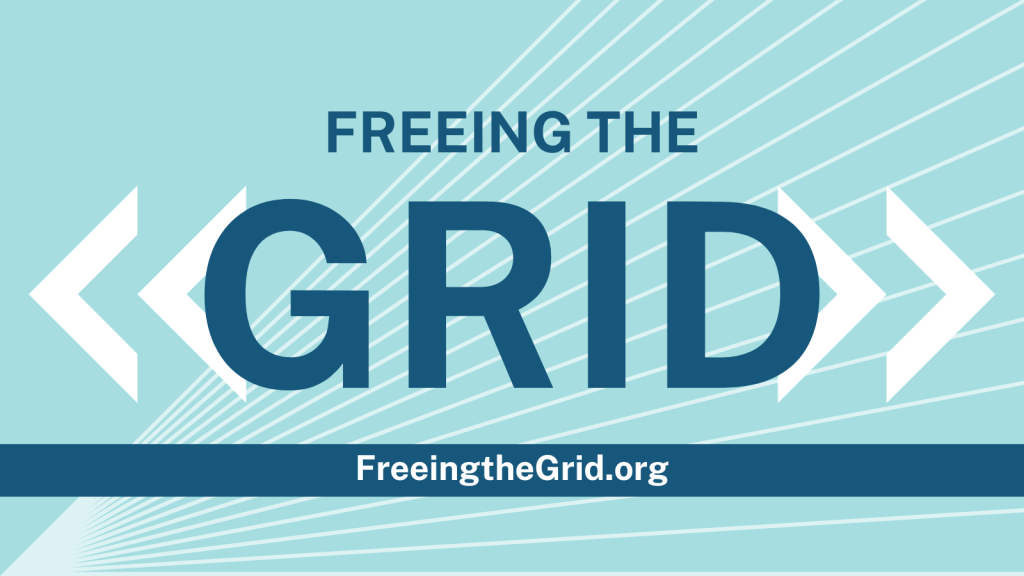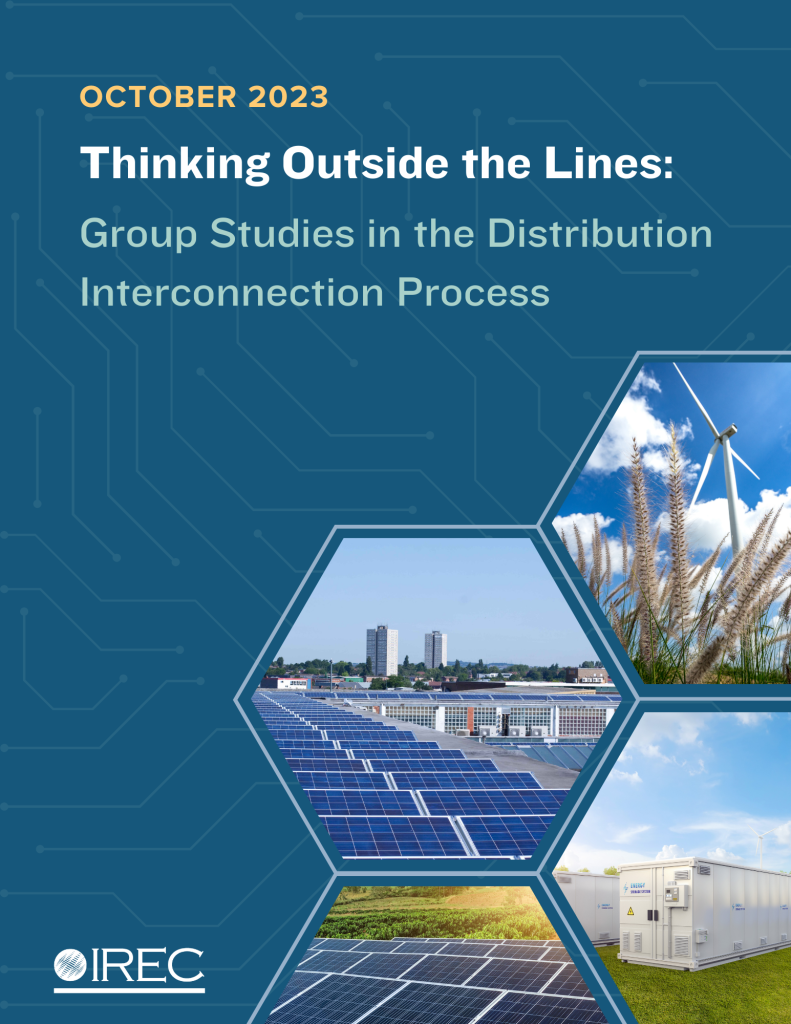Connecting to the Grid
IREC helps streamline clean energy interconnection standards across the country through education, collaboration, and regulatory intervention.Interconnection standards are the “rules of the road” for the electricity grid. They specify the processes, timelines, costs, and technical processes associated with connecting renewable energy systems, energy storage, and other distributed energy resources to the grid. IREC works in states across the country and through national forums to make connecting to the grid more affordable, efficient, and cost-effective.
Now more than ever, states with ambitious clean energy and climate goals will need smarter and more flexible electricity grids. Renewables, storage, electrification, and demand response all need to work seamlessly together. Effective interconnection policy is essential to ensuring a cost-effective and energy-efficient transition to a 100% clean energy future.
Interconnection: The Basics
State interconnection standards govern the process for connecting solar, battery storage, and other clean energy resources to the electric grid. Interconnection rules dictate how efficient and costly it is to install a grid-connected clean energy system. If the process is slow, expensive, and/or unpredictable, it can impede investment and prevent a more rapid shift to clean energy.
Clean energy goals set the vision for a state, but interconnection rules are a key part of whether that vision can be met, affecting both the pace and scale of what can be achieved. For more than a decade, IREC has helped over 35 states adopt or improve their interconnection rules through regulatory innovation and/or technical assistance.
The Challenge
There is more renewable energy on the electric grid than ever before. Many states are struggling to accommodate growing penetrations of renewable energy and distributed energy resources (DERs) on the grid. More and more states are launching interconnection proceedings to address these challenges, not only to handle current and anticipated growth of distributed energy, but also to facilitate more integrated interconnection and distribution system planning.
IREC fills a prominent need to assist both leading and lagging states as they work toward adopting the next generation of interconnection best practices.

Building a Technically Reliable Interconnection Evolution for Storage (BATRIES)
Energy storage is critical to the transition to a 100% clean energy future, but storage faces unique challenges in the interconnection process. IREC is leading a team of partners to simplify the interconnection process for standalone energy storage and solar-plus-storage projects.
The BATRIES project will address key barriers to storage interconnection and identify solutions to enable the rapid deployment of storage on the distribution grid.

Freeing the Grid
IREC’s Freeing the Grid series grades each state in the nation (as well as Washington, DC and Puerto Rico) on the quality of its interconnection policies. These policies govern how distributed energy resources (DERs)—such as solar and energy storage systems—can safely and reliably connect to the distribution grid. Freeing the Grid is a joint initiative of IREC and Vote Solar that grades states on key policies that help to increase clean energy adoption and access to the grid.

Thinking Outside the Lines: Group Studies in the Distribution Interconnection Process
Thinking Outside the Lines: Group Studies in the Distribution Interconnection Process provides guidance on the use of “group studies,” an emerging practice to streamline the interconnection of distributed energy resources (DERs)—such as solar PV, community solar, and energy storage—to the electric distribution grid.
The report aims to help regulators, utilities, and clean energy stakeholders evaluate whether group studies may be an effective avenue for addressing interconnection issues in their jurisdictions. This is an important and timely question because, as an increasing number of DER projects seek to interconnect to the grid, the interconnection process has slowed in many states. It is not uncommon for DER projects to spend years waiting in a queue to be studied.

IREC Vision Summit 2023
Watch on-demand sessions from last year’s IREC Vision Summit 2023, which explored critical clean energy interconnection issues and elevated key solutions. Viewers will gain practical skills to support effective distribution interconnection reform in the U.S.

See Why State Interconnection Rules!
State interconnection rules are some of the most important, but least talked about, policies for enabling our clean energy and climate goals! The #StateInterconnectionRules campaign aims to change that. #StateInterconnectionRules is a communications campaign raising awareness that these policies are some of the most important for meeting U.S. clean energy and climate goals. Join us in spreading the word!
IREC Interconnection Resources
IREC also publishes model statewide interconnection standards aligned with well-vetted best practices. These resources can provide greater consistency across utilities and help streamline the interconnection process for all involved stakeholders. Key resources include:
Model Interconnection Procedures 2023 Edition. These model procedures reflect the latest evolution in best practices to facilitate higher penetrations of distributed energy resources on the electric grid, integrating new technologies. The model procedures help inform and guide state utility regulators, energy industry professionals, utilities, policymakers, and other stakeholders as they develop and/or refine the rules for grid access.
An Overview of Distributed Energy Resource (DER) Interconnection: Current Practices and Emerging Solutions. From the Distributed Generation Interconnection Collaborative (DGIC), this report was commissioned based on the need—identified through DGIC—for a central document summarizing considerations, practices, and emerging solutions across a broad set of topics related to DER interconnection.
Priority Considerations for Interconnection Standards: A Quick Reference Guide for Policymakers. This 2017 quick reference guide serves as a supplement to IREC’s Model Interconnection Procedures, with key considerations for states working to improve/update interconnection procedures. Each section offers a description of the key components to interconnection based on established and well-vetted national best practices.
Interconnection: The Series
Drawing from our on-the-ground experience in more than 20 states, IREC attorneys from Shute, Mihaly & Weinberger discussed key emerging issues and incisive areas of focus for decision-makers in this nine-part series on interconnection reform, originally published in Greentech Media from 2016-2018. The series covers a number of key interconnection topics, including queue management, timelines, data access, cost certainty, cost allocation, distribution planning, energy storage, and dispute resolution.
- Interconnection: Distributed Energy Policy Dream
- Interconnection Queues for Solar
- Enforcing Interconnection Timelines
- Interconnection and Grid Data Access
- Interconnection Cost Certainty and Predictability
- Allocating DER Interconnection Costs
- Prevent Interconnection Deadlock
- The Interconnection of Energy Storage
- Interconnection Dispute Resolution